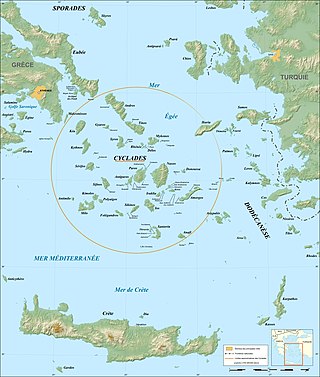
Cycladic culture was a Bronze Age culture found throughout the islands of the Cyclades in the Aegean Sea. In chronological terms, it is a relative dating system for artifacts which is roughly contemporary to Helladic chronology and Minoan chronology (Crete) during the same period of time.
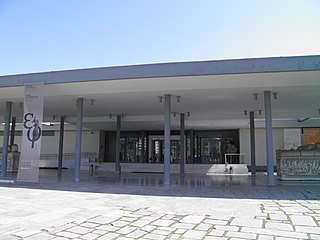
The Archaeological Museum of Thessaloniki is a museum in Thessaloniki, Central Macedonia, Greece. It holds and interprets artifacts from the Prehistoric, Archaic, Classical, Hellenistic and Roman periods, mostly from the city of Thessaloniki but also from the region of Macedonia in general.
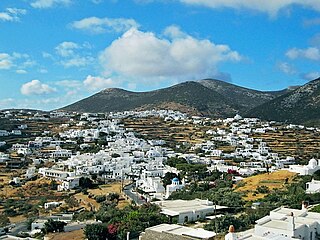
Sifnos is an island municipality in the Cyclades island group in Greece. The main town, near the center, known as Apollonia, is home of the island's folklore museum and library. The town's name is thought to come from an ancient temple of Apollo on the site of the church of Panayia Yeraniofora. The second-largest town is Artemonas, thought to be named after an ancient temple of Apollo's sister Artemis, located at the site of the church of Panayia Kokhi. The village of Kastro, was the capital of the island during ancient times until 1836. It is built on top of a high cliff on the island's east shore and today has extensive medieval remains and is the location of the island's archeological museum. The port settlement, on the west coast of the island is known as Kamares.

The sculpture of ancient Greece is the main surviving type of fine ancient Greek art as, with the exception of painted ancient Greek pottery, almost no ancient Greek painting survives. Modern scholarship identifies three major stages in monumental sculpture in bronze and stone: the Archaic, Classical and Hellenistic. At all periods there were great numbers of Greek terracotta figurines and small sculptures in metal and other materials.
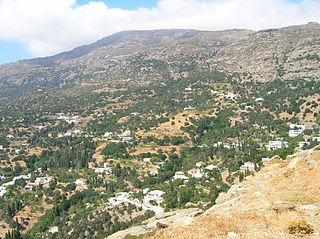
Palaiopoli is an ancient city on the west coast of Andros in the Cyclades Islands, Greece, and was the capital of Andros, during the Classical period.

The Archaeological Museum of Corfu in Corfu, Greece was built between 1962 and 1965. The museum land was donated by the city of Corfu. Its initial purpose was to house the archaeological finds from the Temple of Artemis in Corfu. In 1994 it was expanded with the addition of two more exhibit halls that display the more recent finds at the ancient citadel of Corfu. It is located on 1 Vraila Armeni St.
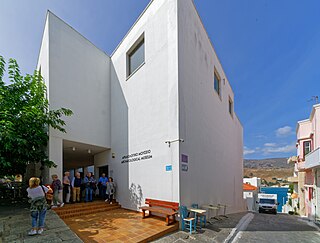
The Archaeological Museum of Andros is a museum in Andros, Greece, established in 1981 following a donation from the Basil and Elisa Goulandris Foundation.

The Archaeological Museum of Delos is a museum on the island of Delos, near Mykonos in the South Aegean, Greece. It is noted for its extensive collection of statues unearthed in the surrounding area of the ancient site, which has been declared a UNESCO World Heritage Site. Although the museum has a considerable collection, it does not contain all of the items found in Delos: a large quantity are on display in Athens at the National Archaeological Museum.
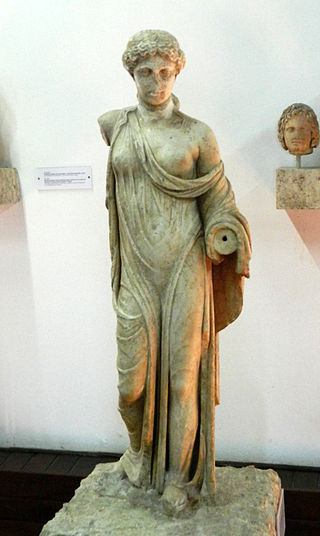
The Archaeological Museum of Lamia is a museum within the archaeological site of Lamia Castle in Lamia, Greece. The museum is housed in a refurbished barracks built in 1830 by King Otto of Greece. It presents prehistoric and Classical antiquities, covering the Neolithic era, Helladic period, Early Iron Age, Archaic, Classical and Hellenistic periods.
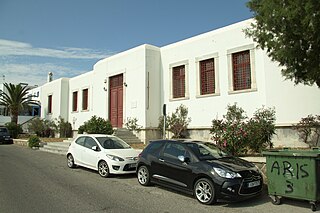
The Archaeological Museum of Mykonos is a museum in Mykonos, Greece. It was built in 1902 to house the findings from the Putrefaction Pit of 425/426 BC, which was discovered in 1898 on the islet of Rheneia by D. Stavropoulos. It is one of the oldest museums in Greece and was designed by Alexandros Lykakis and funded by the Ministry of Education and the Archaeological Society of Athens. The land as donated by the Municipality of Mykonos. Its collections include exhibits dating from the Prehistoric to the Hellenistic period.

The Archaeological Museum of Polygyros is a museum in Polygyros, Chalkidiki, in Greece. The museum is located in Iroou Square in the town centre and displays representative archaeological finds from all over Chalkidiki. More specifically, they cover a span of time ranging from the Bronze Age to the Roman period and come from ancient Stageira, Toroni, Pyrgadikia, Aphytos, Polygyros, Ierissos, Stratoni, as also from the ancient city of Olynthos. The museum is recently renovated and enriched with interactive boards and infrastructure for disabled people. The Archaeological Museum of Polygyros was closed in January 2012 and reconstruction began in May 2012. Completion of reconstruction is expected sometime in summer 2014.

The Archaeological Museum of Thera is a museum in Fira, Santorini, Greece. It was built in 1960 to replace an older one which had collapsed by the 1956 Amorgos earthquake.
The Archaeological Museum of Rethymno is a museum in Rethymno, Crete, Greece. The building that houses the museum is the church of San Francesco, built by the Barozzi family around 1530.
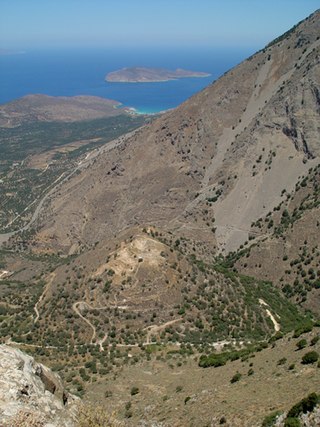
Azoria is an archaeological site on a double-peaked hill overlooking the Gulf of Mirabello in eastern Crete in the Greek Aegean. "Azoria" is a local toponym, not apparently an ancient place name or epigraphically-attested Greek city.

The Museum of Prehistoric Thera is located in Fira, on the island of Santorini in Greece. It was built on the site of the old Ypapanti Church which was destroyed in the 1956 Amorgos earthquake.

Kavousi Kastro is an archaeological site in eastern Crete, Greece, about 1.4 km southeast of the modern village of Kavousi, a historic village in the municipality of Ierapetra in the prefecture of Lasithi.

The Archaeological Museum of Milos is a museum in Plaka on the island of Milos, in Greece. Its collections include exhibits dating from the late Neolithic to the Byzantine period. The unique is collection of ancient Cycladic art, especially numerous findings from Phylakopi on Milos, from early Bronze Age to the late Bronze Age. The best pieces from Phylakopi are in the Ashmolean Museum (Oxford), British Museum, National Museum of Athens, and elsewhere around the world.

The Archaeological Collection of Agios Andreas on Sifnos is a small local museum at the Archaeological site of Agios Andreas. In a modern building the Museum exhibits local findings, from the Mycenaean era until the 5th century BC. The museum was opened in 2010. Until that time was part of the local findings exposed in the Archaeological Museum of Sifnos, in the village of Kastro.

The Temple of Poseidon is an ancient Greek temple on Cape Sounion, Greece, dedicated to the god Poseidon. There is evidence of the establishment of sanctuaries on the cape from as early as the 11th century BC. Sounion's most prominent temples, the Temple of Athena and the Temple of Poseidon, are however not believed to have been built until about 700 BC, and their kouroi date from about one hundred years later. The material and size of the offerings at the Temple of Poseidon indicate that it was likely frequented by members of the elite and the aristocratic class.

The Archaeological Museum of Paros is a museum located in Parikia on Paros, Greece. The museum was founded in 1960 and consists of two rooms and an atrium.




























